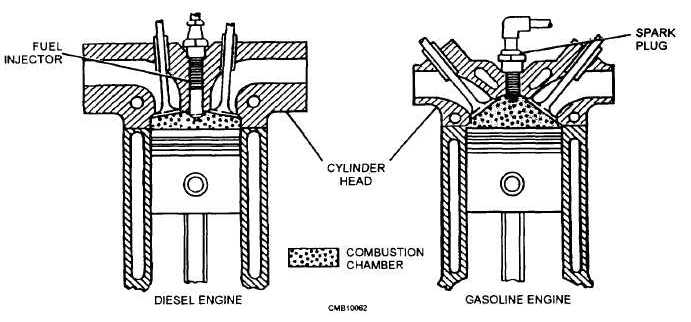upper end of the cylinders and, in air-cooled engines, the cylinder heads are bolted to the top of the cylinders. This serves to provide a combustion chamber (fig. 3-11) for the ignition of the mixture and to hold the expansion forces of the burning gases so they may act on the piston. In a gasoline engine, there are threaded holes to position the spark plugs in the combustion chamber. On a diesel engine, there is a similar arrangement to position the fuel injectors. In a liquid-cooled engine, it also contains passages, matching those of the cylinder block, that allow cooling liquid to circulate in the head.
The I-head (overhead valve) type of cylinder head (fig. 3-12) contains not only water jackets for cooling spark plugs openings, valve pockets, and part of the combustion chamber, but it also contains and supports the valves and valve operating mechanisms. In this type of cylinder head, the water jackets must be large enough to cool not only the top of the combustion chamber but also the valve seats, valves, and valve operating mechanisms.
The cylinder heads are sealed (fig. 3-13) to the cylinder block to prevent gases from escaping. This is accomplished on liquid-cooled engines by the use of a head gasket. The head gasket is usually made of two sheets of soft steel that sandwich a layer of asbestos. Steel rings are used to line the cylinder openings. They are designed to hold the tremendous pressure created on the power stroke. Holes are cut in the gasket to match the coolant and lubrication feed holes between the

Figure 3-11. - Combustion chambers.
cylinder head and the cylinder block. In an air-cooled engine, cylinder heads are sealed to the tops of the cylinders by soft metal rings. The lubrication system feeds oil to the heads through the pushrods.

Figure 3-12. - Cylinder head for overhead valve engine.
Continue Reading